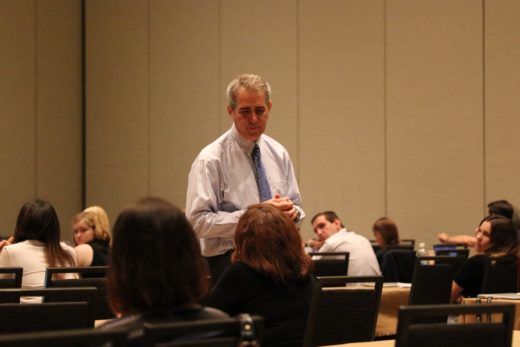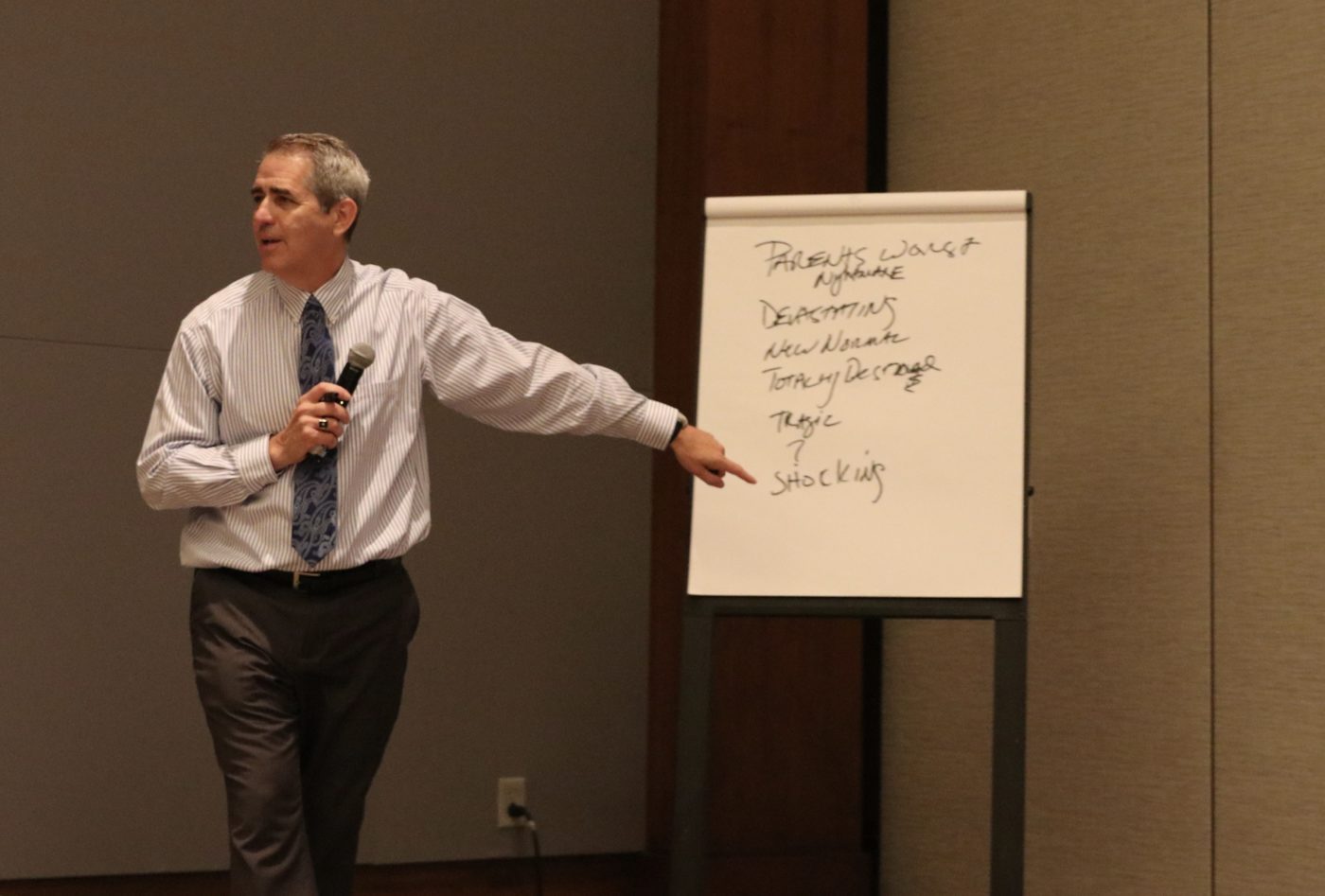Boyd’s 10 Exercises to Pump Up Your Storytelling Muscles
Many recognize Boyd Huppert as an award-winning journalist, whose work has earned him 16 national Edward R. Murrow Awards, four Sigma Delta Chi Awards, a National Emmy and the Scripps Howard Award.
Others know him as a broadcast reporter at KARE TV in Minneapolis.
But Huppert thinks of himself as a storyteller.
At EIJ19 in San Antonio, Huppert shared some of his personal tips to build powerful stories.
“They hired us as storytellers,” Huppert said. “Turn the assignment into a story.”
He began by sharing an assignment he’d been given about a 5-year-old boy named Moses who needed eye surgery to overcome his blindness. Huppert and his cameraman noticed Moses playing with the camera microphone, and decided to film this young boy’s obvious joy in his ability to see.
They turned their assignment into a story.
“This isn’t a story about a little boy getting his eyes fixed, that’s the assignment,” said Huppert. “So what’s the story? He is seeing the world through a new set of eyes. Eventually we had to take back that microphone, but the eyes, Moses gets to keep.”
Huppert captured character, emotion and concept and used 10 techniques to transform his video assignment into a story experience.

#1: Focus
“Immerse yourself in the focus of the story.”
Drill down to what the story is really about, and let that drive the narrative.
#2: Eyes open
“What’s going on that we can respond to?”
Be judicious in determining when you have a story.
#3: SHHHHHH
“Every sound bite has a life, and it’s not over when the words stop.”
Silence is golden; find the heart of a soundbite.
#4: The Open
“Get that initial reaction. You won’t be able to get it twice.”
Film everything because you don’t know what is going to happen.
#5: Reveals/Surprises
“Allow the viewers to be a part of the story.”
Connect people with emotion.
#6: News Clichés
“Strike [parents’ worst nightmare, devastating, tragic] from your vocabulary.”
Rewrite sentences to remove overused expressions.
#7: Strong Sentences
“Where is the power?”
Craft sentences to focus on the narrative.
#8: Write to the edge of the screen
“Tell the story through the lens of the camera.”
Match words to visuals.
#9: Gather sound, not noise
“What’s the difference between natural sound and just plain noise?”
Know when the sound is a part of the story.
#10: Putting it all together
“It’s just video, until a storyteller creates an experience.”
Make a decision on how to tell the story.
All stories have a beginning and an end. Capture the moments.

